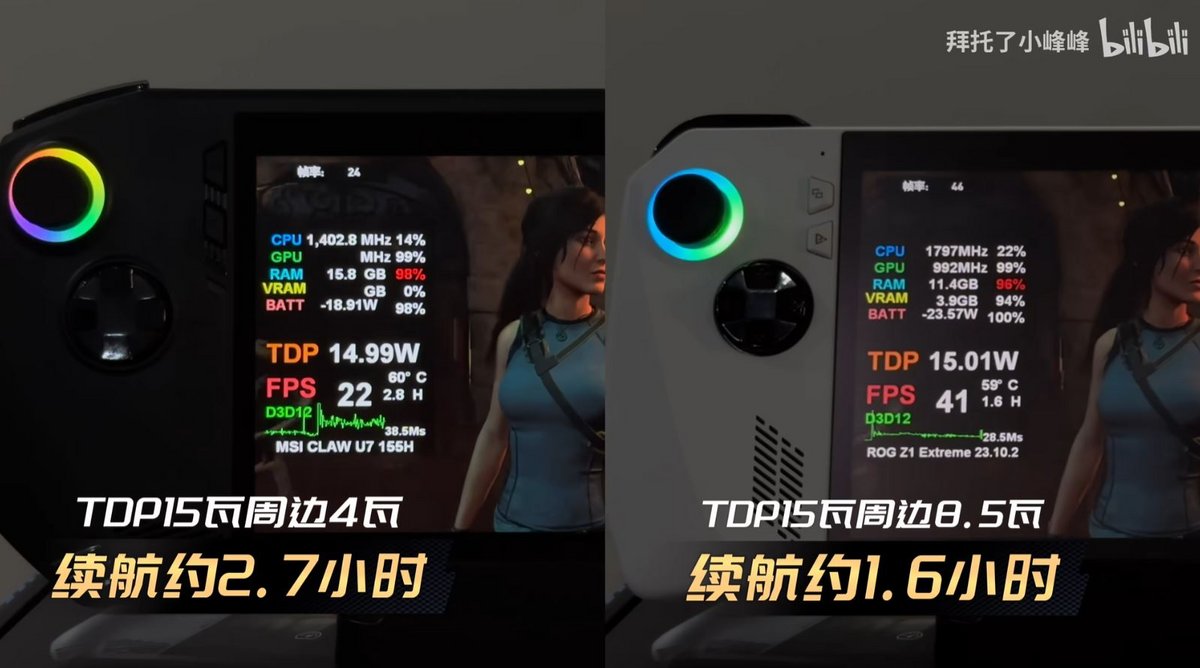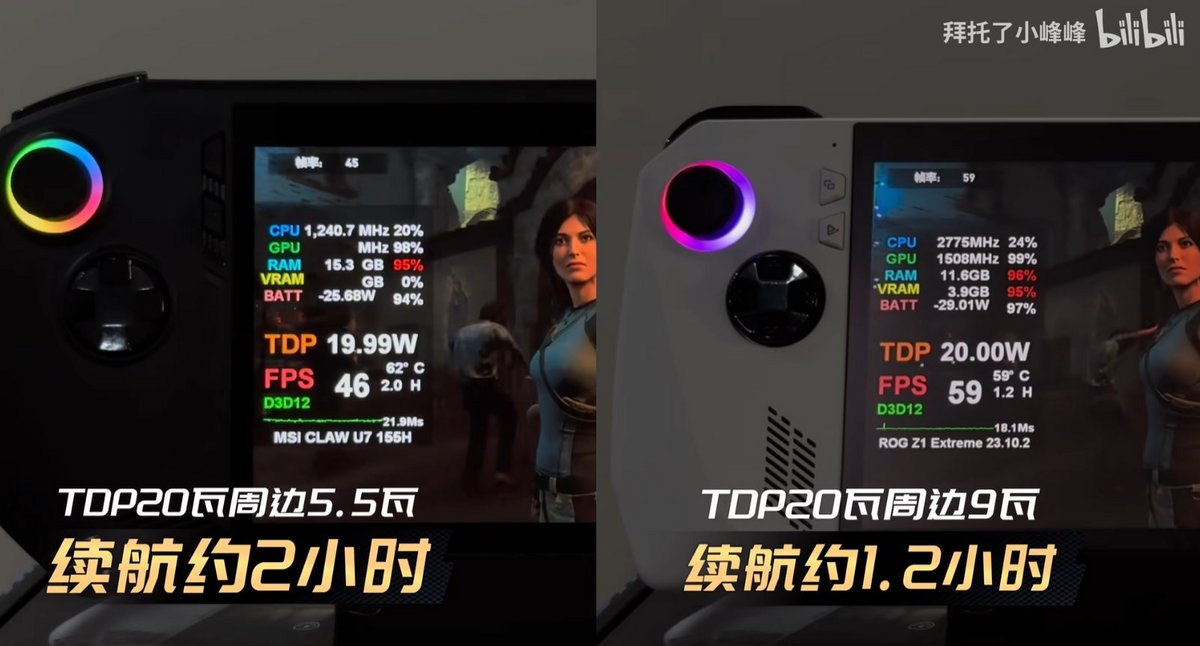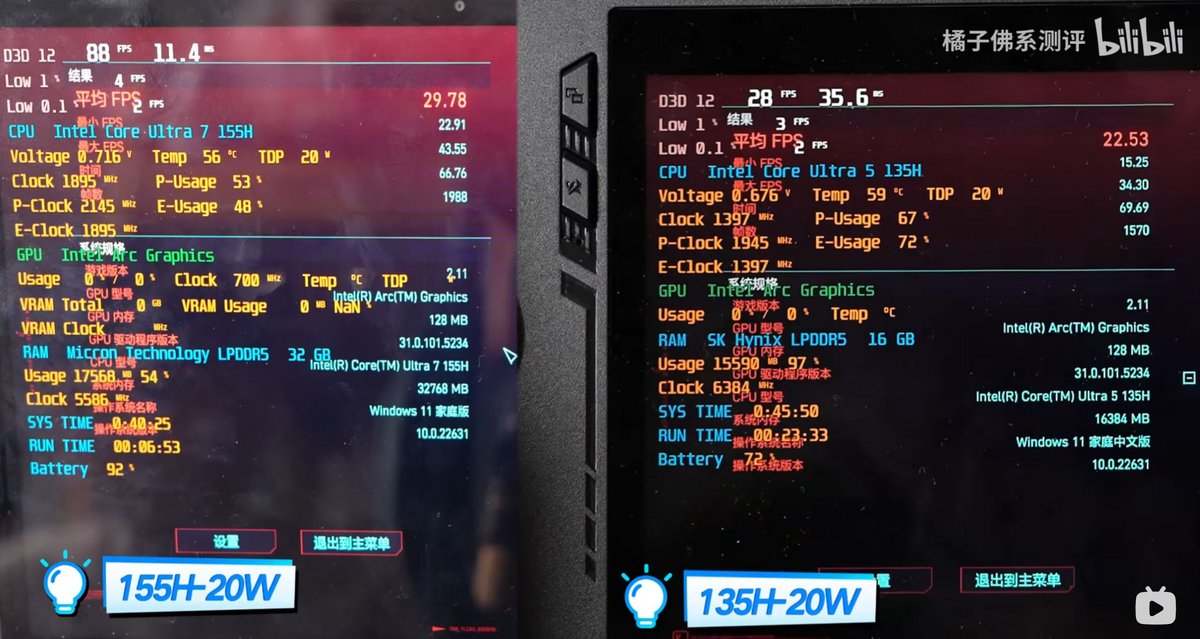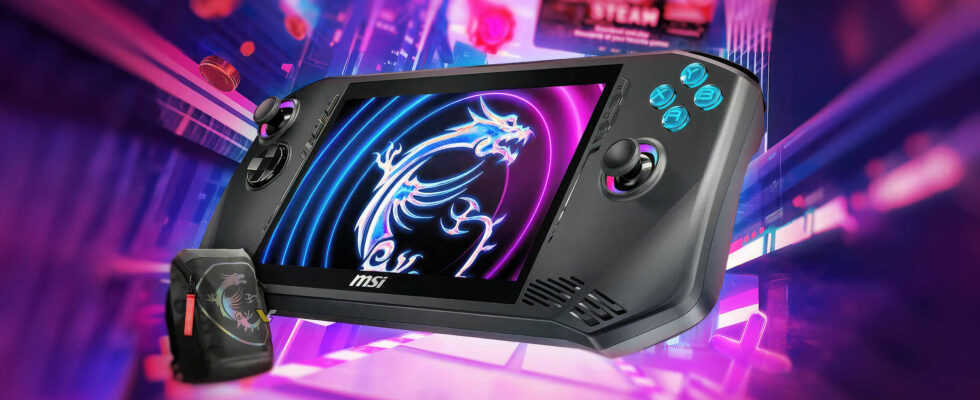Not expected for a few more weeks, the MSI Claw seems likely to display lower performance than the portable consoles based on AMD Ryzen processors. Worrying?
Announced at the very beginning of the year – somewhat to everyone’s surprise – the MSI Claw portable console managed to create an event by standing out from the competition: it is the first to use an Intel processor.
Whereas, from the Steam Deck to the Legion Go, all the machines are based on AMD, MSI has therefore opted for a Meteor Lake component… and that is perhaps not such a good idea.
Intel Core Ultra 7 155H and Core Ultra 5 135H
With the Meteor Lake generation, Intel has promised more muscular graphics solutions than its predecessors. Solutions inspired by the ARC range and its famous Xe cores to compete with AMD and its Ryzen APUs.
Thus, the MSI Claw will in the best case integrate a Meteor Lake Core Ultra 7 155H chip with eight Xe cores. A second variant of the console is planned, based on Core Ultra 5 135H which is now equipped with “only” seven Xe cores. But, in either case, the first results are quite far from those of AMD chips.
VideoCardz relays the first Chinese publications which pit the MSI machine against one of the closest competitors both in terms of characteristics and theoretical power, the ASUS ROG Ally Z1.



On the right, the ASUS ROG Ally is above the MSI Claw © VideoCardz
Less performance than the ASUS ROG Ally Z1
Unfortunately for Intel and for MSI, the ROG Ally Z1 – its most powerful version – seems likely to win by a certain margin, for example over Shadow of the Tomb Raider. Regardless of the TDP, each time the Claw is behind and sometimes by a lot: 24 frames per second compared to 42 at 15 watts.
The gap is reduced to 20 watts (40 fps versus 53) and even more to 25 watts (46 fps versus 56), but still in favor of the ROG Ally. Even more annoying, at max TDP, the MSI Claw remains behind at 49 fps compared to 53. More annoying because the Claw is then at 40 watts and the ROG Ally at 30 watts. That said, it is interesting to note that the Claw seems to benefit much more from a large TDP.


Quite similar differences are found on Cyberpunk 2077 (44.8 against 59.8), on Red Dead Redemption 2 (49.2 against 60.2) and on resident Evil (21 to 53 fps versus 51 to 68). The MSI Claw with Core Ultra 5 135H is logically in a little more difficulty at 22.53 fps at 20 watts compared to 29.78 fps on the Core Ultra 7 155H version at 20 watts.
Of course, these are preliminary tests and we will be keen to verify all this with the sample sent by MSI. If the situation were to be confirmed, however, it could be a handicap for MSI because its Claw does not seem likely to be cheaper than the competition. Release planned between the end of March and mid-April for both versions of the Claw.
Source : VideoCardz


2